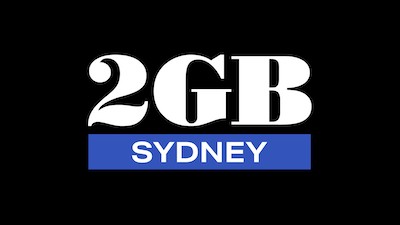Local versus Networking
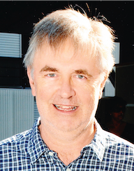
Greg Smith is an inductee into the Australian Radio Hall of Fame, and a Director of Radio Today.
One of the biggest changes to radio in the last decade or so has been the growth of networked programs from Sydney & Melbourne.
.jpg)
For the regional markets this has been both a blessing & a curse.
On the plus side this has brought stars & celebrities into the smaller markets at a reasonable cost. Also for management it’s one less program to worry about.
On the downside some markets have felt a backlash & a loss of revenue from local advertisers. Local advertisers love live reads & interaction with the talent. In a lot of cases it was too hard for the talent to deal with so many stations.
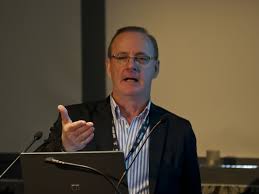 During his time at Southern Cross Media, Rod Brice did a great job of localising the networked shows & keeping the local advertisers happy. Rod says, “The live and local philosophy was an important part of the growth & success of the small regional network RG Capital Radio and continued with the regional powerhouse Southern Cross Media.
During his time at Southern Cross Media, Rod Brice did a great job of localising the networked shows & keeping the local advertisers happy. Rod says, “The live and local philosophy was an important part of the growth & success of the small regional network RG Capital Radio and continued with the regional powerhouse Southern Cross Media.
The philosophy guide was simple, local always beats average voice tracked networking, and extraordinary networking e.g. "Hamish and Andy" beats average local. Extraordinary local beats all comers. Each market ran with its own PD over usually a duopoly, however they took ownership of all content delivered with authority and encouragement to try and test localised imaging and content and occasionally music if there was a specific battle unique to the market, localised success stories were shared with the network.
The content and the cash part of the business worked hand in hand to grow both.
The simple test was if I listened to two or three locally created breaks, no matter the format, could I tell I was in a local market. If I couldn't, why not?” Rod can be contacted at www.rodbriceconsulting.com
For the stations competing with the big networked programs this was the great opportunity to own the local position.
.jpg) Strategic programmers realised that a strong local show could beat the networked stars. Hot Tomato’s Content Director David Rymer is one of them.
Strategic programmers realised that a strong local show could beat the networked stars. Hot Tomato’s Content Director David Rymer is one of them.
“Our local Drive show, The Mal and Luke show is consistently our best performing show up against its networked counterparts. Luke Bradnam runs in the Gold Coast Airport Marathon and sleeps out at the Vinnie’s Sleep out, visits our clients, performs their live reads and so the list goes on.
Having star power talent produced by great Content Directors is only half the story.
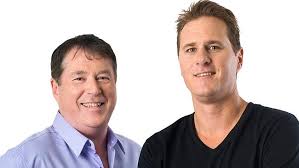 Making a terrific local show that connects and giving listeners and clients in that market complete access to it has proven to be very powerful for Hot Tomato. So local programing beats networking hands down if it’s done right. Only recently, SCA here on the Gold Coast pushed back its networked Drive show to make way for a local two hour drive show to combat us. Guess that says it all”. David can be contacted here.
Making a terrific local show that connects and giving listeners and clients in that market complete access to it has proven to be very powerful for Hot Tomato. So local programing beats networking hands down if it’s done right. Only recently, SCA here on the Gold Coast pushed back its networked Drive show to make way for a local two hour drive show to combat us. Guess that says it all”. David can be contacted here.
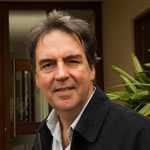 Brad Smart, former owner of the Smart Radio Network says, “Like it or not, networking is one of the few truly cost-effective solutions for small market radio, but the programming still needs to be appropriate for the market it’s broadcast in, or, there’s going to be an associated turnoff factor from listeners.
Brad Smart, former owner of the Smart Radio Network says, “Like it or not, networking is one of the few truly cost-effective solutions for small market radio, but the programming still needs to be appropriate for the market it’s broadcast in, or, there’s going to be an associated turnoff factor from listeners.
When it comes to talk programming, small markets usually can’t afford a local talk host.
It’s a luxury that is beyond the reach of small stations, not only financially, but creatively, because the talent is rarely available in remote areas, so you have to rely on syndicated programs.
Regional station audiences tend to regard their state’s capital city as ‘local’ when it comes to talk programming because the issues being discussed are generally those that affect the state as a whole and therefore have a direct relationship to the listener. That’s why Neil Mitchell, for example, works well across the ACE network in Victoria.
When you try to introduce talk topics from capital city markets outside the state that don’t relate to the people in the parochial markets you’re serving, that’s when you often get into trouble with your audience.
When it came to originating our own networked programming in the former Smart Radio Network, we thought we were quite inventive in the way we linked our small market stations together across the state. Each night, we ran a music request program for people in the mining industry from midnight to dawn and broadcast it into five separate heritage markets.
We had an announcer in Noosa, a 1300 number, a computer-based text program for taking requests, and, the ability to play local commercials in each of the markets. More than 100 requests a night would come into the central location and we were able to produce a cost-effective network program that proved to be highly profitable. It wouldn’t have been profitable if we had had to produce a separate show in each market.
For afternoon music programming, we used to take a different approach. We used to run the same music log on all our heritage stations, but the program was played out from a local Nexgen server in each market. The common music program allowed us to voice-track around the network with a single announcer, giving us economies of scale that a small market operation normally couldn’t achieve.
It was a sort of pseudo-networking but without having to rely on satellite delivery, telecommunications networks or being put under commercial obligations to third party providers”. Brad can be contacted here.
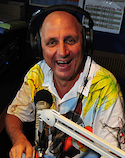 Many programmers could learn from Steve Price at 4TO.FM in Townsville. Nobody does local better than Steve.
Many programmers could learn from Steve Price at 4TO.FM in Townsville. Nobody does local better than Steve.
The ABC probably networks more programs than anyone else. A clever strategist like Jeremy Millar understands how important being local is.
It’s even in his job title, Manager of Metropolitan Local Radio. The ABC never stops advertising ‘Your Local ABC’. Jeremy says “In 2014 ‘Local’ is still a big deal for Radio. In a way, localism is not a long way from the town crier or town-hall meeting of old, and that direct pipeline to an interested and engaged constituency has kept radio vital through decades of change. Local kicks in around topical social, immediate community content. ‘The world from my backyard’ clearly means something to people when it comes to how they digest information.
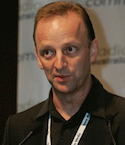 But just originating your content locally is no panacea. What we offer (be it local or networked) has to pass the ‘relevance’ test for the target audience – WIFM?
But just originating your content locally is no panacea. What we offer (be it local or networked) has to pass the ‘relevance’ test for the target audience – WIFM?
Whether the microphone is down the street or interstate, the content right now has to compel me to listen.
All things being equal, excellent local content will win because it’s firmly in the context of my day-to-day experiences. Reflecting on the need for relevance (which starts with understanding your audience’s needs), Susan Marjetti at CBC Toronto recently said, “Relevance trumps geography every time, but we draw our interpretation from our geographic location.” This is interesting, and it hints at the advantage a locally originated show should be seeking to exploit.
Localism is something that new technologies can disrupt so radio doesn’t have a monopoly on this. For example, an online article with subsequent reader comments has an element of talkback in it. This was something print newspapers struggled with in the past, but now the old ‘letters to the editor’ have been replaced with real-time online comments – frequently of a hyper-local nature. On the other hand, we in radio now get to publish text, photos and video, so the two industries are certainly a lot closer than ever before. The content that proves most popular will be the content that audiences find most in-sync with their needs, and Local is clearly an important card to play in that game”. Jeremy can be contacted here.
